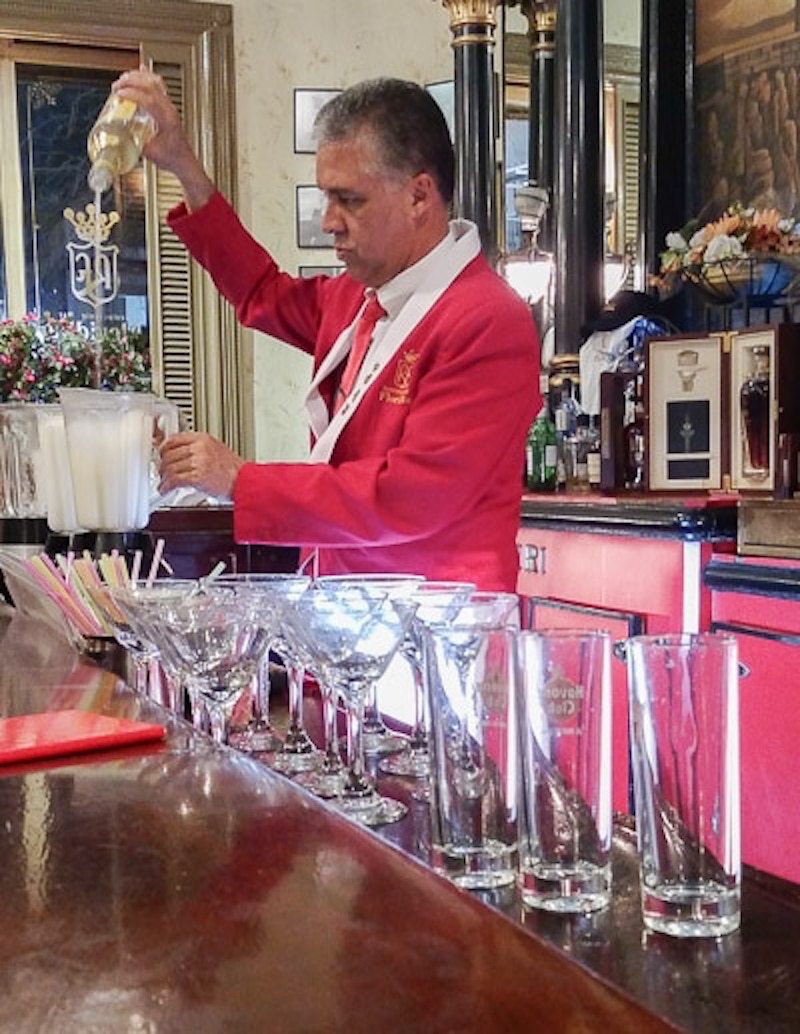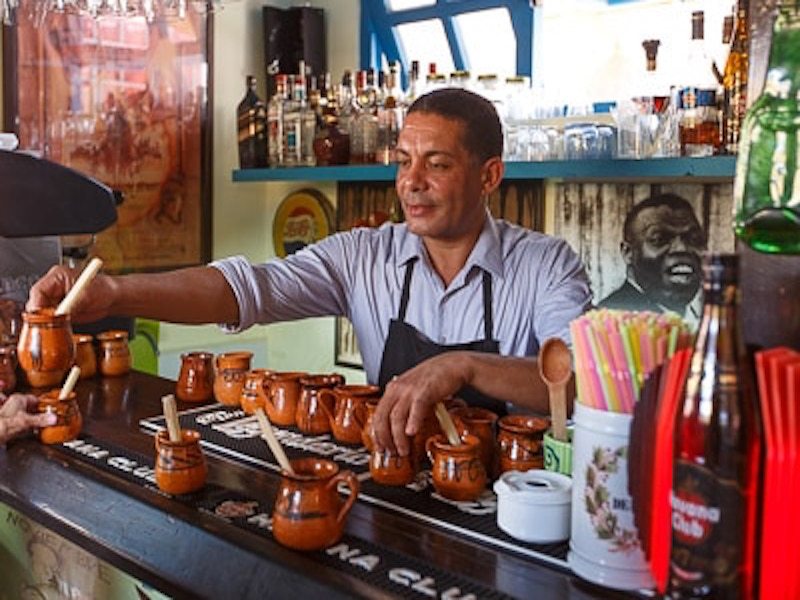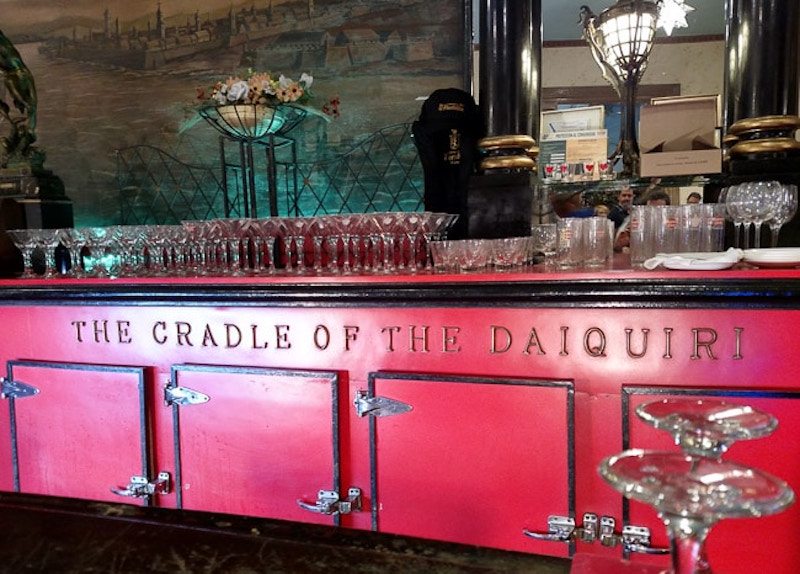When most of us think of Cuba, we have a romantic mental image made up of scenes from the 1950s, perhaps including Al Pacino visiting on the eve of the revolution (Godfather reference). A place full of nightclubs, casinos and, of course, bars where cantineros (Cuban bartenders) threw Cuban cocktails between mixing glasses and poured from multiple bottles of rum at a time into big blenders.

Fast forward to 2016 and such scenes are very rare. Most Cubans have no money, so the only people who get to enjoy cocktails at bars are those from other countries and, until recently, this did not include the biggest cocktail consumers of the world – Americans.
For the most part, Cuban drinks are very sweet and fairly light when it comes to alcohol content. Rum is the prime ingredient in most drinks, as you’d suspect, but it’s not clear if this is because the visitors with money expect rum drinks, or because rum is native and, therefore, cheaper. The sweetness comes from cane sugar, not so much from juice. Sugar is a huge part of the Cuban diet and that extends to cocktails.
There is a long history of mixing unique cocktails in Cuba that predates the wave of American tourists who arrived in the middle of the last century. And, these drinks were not all rum drinks. Bartender’s manuals from the 1920s and 1930s show extensive use of vermouth, bitters and gin. Fruit was used extensively, as you’d imagine, but often just the skin of the fruit rather than the juice to keep the drinks on the dry or even tart side. In our experience in Cuba, this variety of drink is, unfortunately, no longer widely appreciated. Again, this can simply be because the tourists with money are not there for the cuban cocktail heritage, but are more interested in what they think Cuban drinks should be.
Outside of Havana, there are few bars that sell much more than beer. Once in a while, a Mojito, Daiquiri or Caipirinha (using rum instead of Cachaca), can be found. Each made with little more than rum and lime juice.

Several paladars (family run restaurants, not to be confused with the much more prevalent state run establishments) we visited also had good bars, mostly with limited menus. They tended to serve house specialties – sweet, rum-based drinks. Mojitos and Daiquiris can be found almost everywhere. In fact, Mojitos are so popular among the tourists that there is a black market in mint – seriously. One farmer told us that they have to guard their mint crop because thieves will steal it and sell it to restaurants for tourist’s Mojitos.

As you’d imagine, inside Havana, there are more bars. Still, almost all aimed at tourists. The Floridita, which proclaims to be the cradle of the daiquiri and has a bust of Hemingway at what was, apparently, his favorite seat in the establishment (it seems that Hemingway drank at most bars in Havana . . . according to the proprietors of the bars anyway), seemed to be the gathering spot for foreign cocktail consumers. We had both a “classic daiquiri” there, as well as a Floridita. While the experience was fun, neither drink was too impressive.


We had a better experience at the Hotel Nacional de Cuba. Built in the 1930s and THE hotel in Havana prior to the revolution, it has a beautiful bar and a signature drink, the Hotel Nacional, of course. This one was quite good. A bit of what you’d expect in the Caribbean, juicy, while not overwhelming the rum. We’ve made it frequently since the return from our visit.












